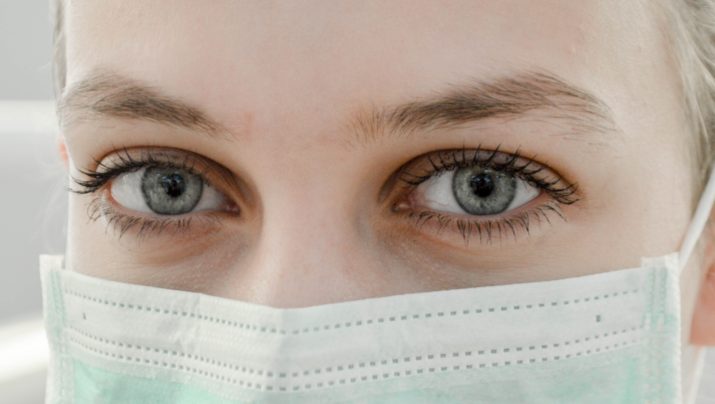
Everything is wrong with the title of this article. First of all, using the word “demystifying” makes it sound like Crisis Pregnancy Centers, or CPCs, are some esoteric entity way cooler than they actually are. And to use the term “Crisis Pregnancy Center” is to call it by its actual name, which, as I have learned as a community organizer, doesn’t actually harm the cause. We want to reframe it, to make it ours. So, the reproductive justice community has taken to calling CPCs “fake clinics”—because that is what they actually are. They are fake clinics, very rarely staffed by real medical professionals, using lies and manipulation as tactics to scare pregnant people from getting abortions.
So instead of Demystifying Crisis Pregnancy Centers, in the words of a 70+ member national coalition of reproductive justice advocates, I’m here to Expose Fake Clinics.
The first fake clinic opened in 1967 after Hawaii’s decriminalization of abortion. Many more opened as a response to the 1973 passing of Roe v. Wade, but they have picked up steam in recent years, particularly with the rise of the Tea Party, when we began seeing an increase in laws passed against reproductive rights. NARAL Pro-Choice America estimates there are about 3,500 fake clinics in the nation, as of 2017. Updated numbers on abortion clinics are trickier to find: the Guttmacher Institute, the nation’s leading institute on reproductive research, states that there were 1,671 clinics in America in 2014, but clinics have been shuttering across the nation. In 2017 alone, 49 facilities closed, and Trump’s proposed “Gag Rule” threatens the future of many more.
The fact that so few people know that they exist means that any pregnant person can wander into one thinking that they can get an abortion—but they will be wildly deceived.
But with 3,500 fake clinics nationwide, people should know about them, right? As recent as 2017, I didn’t. I considered myself a feminist, a champion for women’s and reproductive rights. I read and shared articles on how our basic rights are being stripped away from us. But not until I began interning at the National Institute for Reproductive Health did I even learn about fake clinics and their deceptive tactics. And as I tell people about them, I learn that many other people don’t know either. This is what’s so dangerous about these facilities. The fact that so few people know that they exist means that any pregnant person can wander into one thinking that they can get an abortion—but they will be wildly deceived.
Fake clinics live under the guise of being helpful “family planning” institutions, often having similar names as facilities that offer abortion as an option, and even placing themselves across the street from—or even in the same building as—abortion clinics. But fake clinics are the complete opposite of an abortion clinic. Over the summer I participated in a protest with Lady Parts Justice League after the Supreme Court ruling on NIFLA v. Becerra where we exposed fake clinics to unknowing participants in Washington Square Park, New York, acting out a common scene in the clinic, which I’ll detail below.
First, the patient enters the facility and the receptionist gathers personal information including social security number, employer information, and emergency contact information. Since fake clinics are not a medical facility, they are not bound by HIPPA, so they can do anything with this personal information. In some instances, fake clinics have called emergency contacts, such as the patient’s significant other, and informed them that the patient is pregnant and came in to seek an abortion. This can be extremely dangerous if the pregnant person is in an abusive relationship.
Since fake clinics are not a medical facility, they are not bound by HIPPA, so they can do anything with this personal information.
Next, the patient is led into a room where they undress and the receptionist takes all their clothes and belongings. I repeat: they are left alone in a room without their clothes or their phone. They are hostages. Of course, this is under the guise that they are at a medical facility and this seems totally normal because they think they are about to have a medical procedure, but wait until you see what happens next.
The “doctor” comes in. They have on a medical coat, which seems professional, but it was probably bought off Amazon. They provide an ultrasound, which also seems professional, but you do not need a medical license to perform an ultrasound. This is where the doctor begins talking about “options,” but none of these options include abortion. They may force patriarchal, religious standards on the patient: “Since you aren’t married, this is a consequence of premarital sex.” This is when the patient realizes they need to leave, but they don’t have their clothes or belongings, so they are trapped.
If the patient asks about abortion, they’ll be told straight up lies. Things like “abortion causes breast cancer,” “abortion leads to depression and suicide,” and “abortion leads to infertility.” You can find information here, here, and here regarding these myths. If you visit a real facility, such as Planned Parenthood, you can speak to an actual medical professional, who can provide you with more information.
The patient will be told they have plenty of time to make a decision. And the longer a pregnant person waits, the more likely they are to be unable to get an abortion.
The patient will be told they have plenty of time to make a decision. They may also be told they aren’t as far along in their pregnancy as they actually are (remember, they aren’t real doctors so they can tell you anything they want). These lies are dangerous. Laws vary in different states, but the longer a pregnant person waits, the more likely they are to be unable to get an abortion. In New York, the cutoff is 24 weeks, but states are passing 20-week abortion bans across the country, and in March of this year, Mississippi passed a 15-week abortion ban. If patients are told they are 12 weeks along but they’re actually 14 weeks, time is of the essence in scheduling an abortion.
So, what can we do to #exposefakeclinics?
- First and foremost, take it to Google. If you google “abortion clinic near me” and scroll through the options, you’ll find a fake clinic (or several) in your area. Names sound like “Family Planning Options” or “Alternative Choices.” They have great reviews because they likely review themselves. Leave a bad review, tell people what they actually do, that they do not provide abortions and that they use lies and deception. Same goes for Yelp reviews.
- You can also tweet at Google CEO Sundar Pichai (@sundarpichai), who is cracking down on fake opioid treatment centers on Google, but hasn’t removed fake clinics. The Expose Fake Clinics website has other great ideas like this for taking action.
- In New York City, the Department of Consumer Affairs is supposed to regulate fake clinics, making sure that they post signs both inside the clinics and on their websites stating that there are no medical professionals on site, but they rarely comply. You can contact 311 to report a violation (mention “Crisis Pregnancy Center” to get put through). This was passed through the City Council, so if you don’t think that the DCA is paying attention to your complaints, contact your City Council member.
- You can also contact your state senators and tell them you want fake clinics more closely monitored. The Supreme Court recently ruled that fake clinics can operate based on free speech, but that doesn’t mean we can’t continue the fight.
Photo by Ani Kolleshi.




